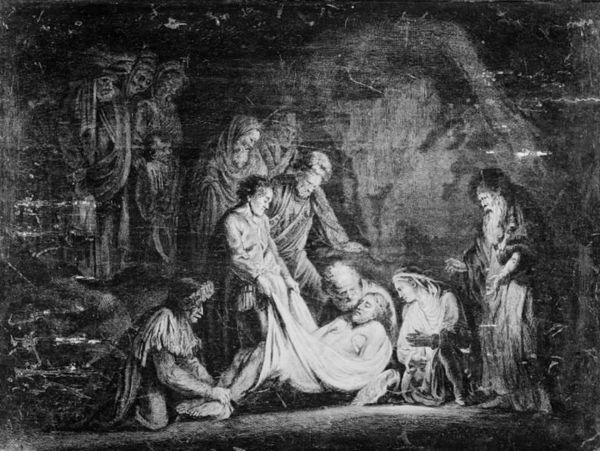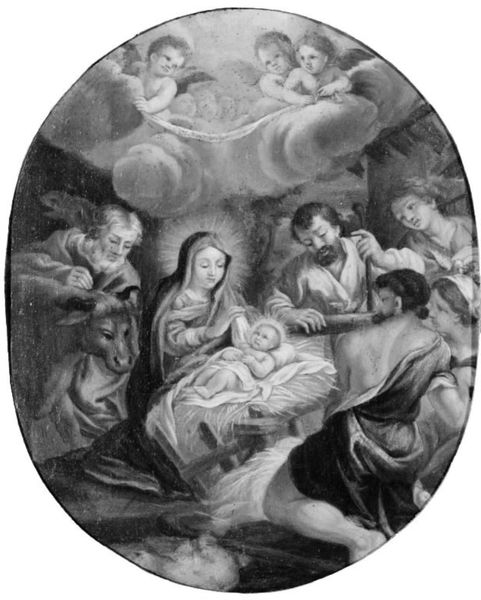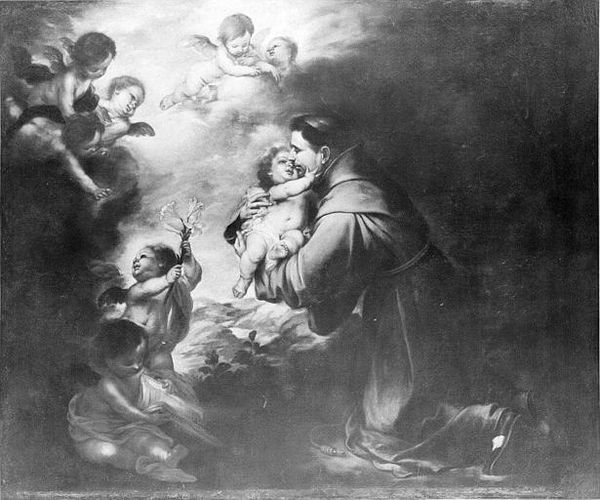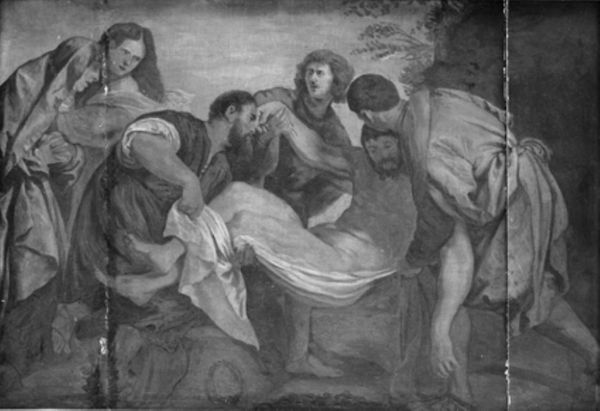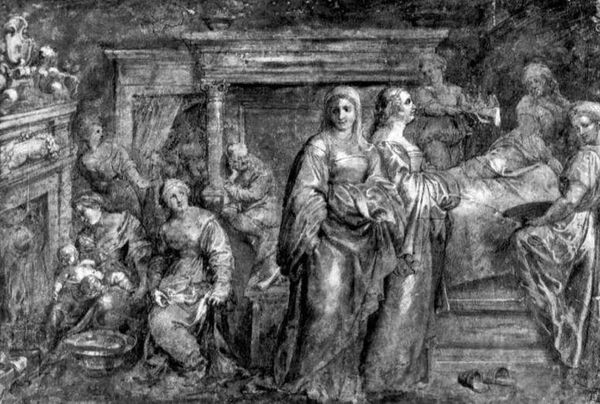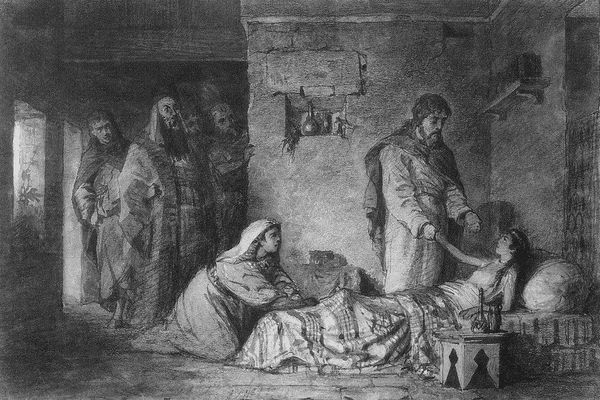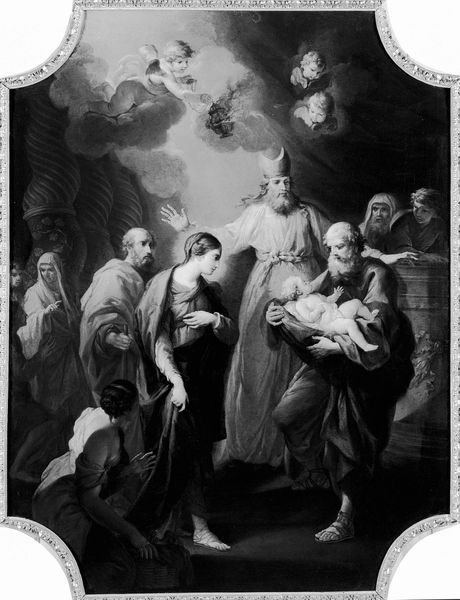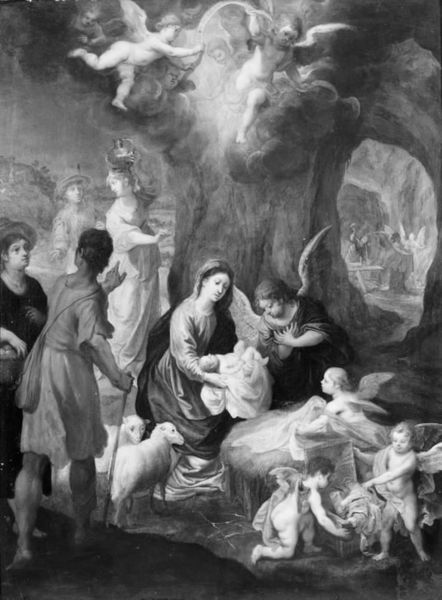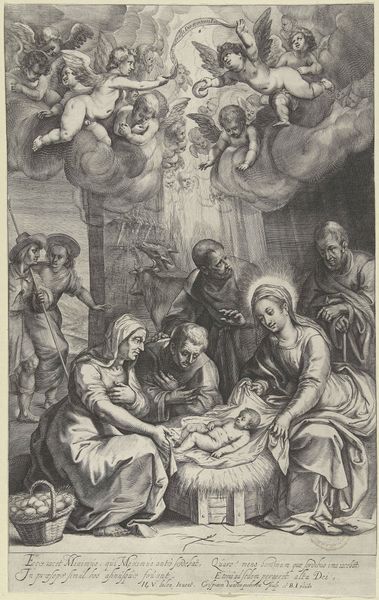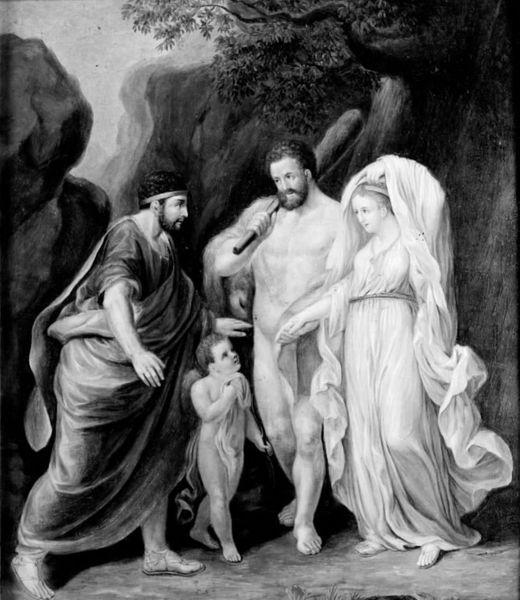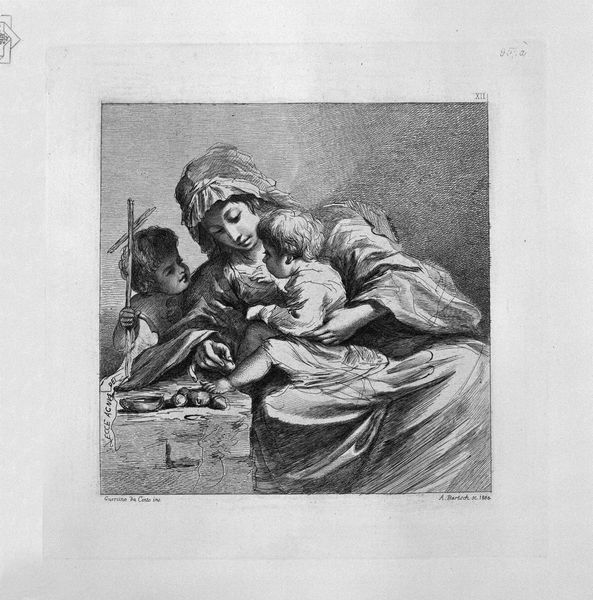
oil-paint
#
narrative-art
#
baroque
#
oil-paint
#
landscape
#
figuration
#
black and white
#
history-painting
#
monochrome
#
monochrome
Dimensions: 43 cm (height) x 112 cm (width) (Netto)
Editor: This is an oil painting titled "The Adoration of the Shepherds," dating back to the 17th century, by an anonymous artist. What strikes me is the overwhelming darkness, punctuated by this intensely bright central figure. How can we even begin to unpack the context around its creation? Curator: Let's begin by considering the material realities. The use of oil paint, though common at the time, speaks to the resources available, both economic and environmental. Was this pigment sourced locally? How did its cost influence the scale and availability of such images for consumption by ordinary people, not just the wealthy elite? Editor: So you're saying even the choice of oil paint isn't neutral – it connects to networks of trade and access? Curator: Precisely. And think about the labor involved in creating it – from grinding pigments to preparing the canvas. This wasn't just an act of divine inspiration; it was a highly skilled form of craft. Consider that most art history ignores such work that went into the means of art production, instead fixating on an artistic vision. What might we find if we dig into archival records documenting these forgotten artisans who brought it to life? Editor: That's a powerful way to reframe the conversation! It forces us to think beyond the immediate religious subject and consider this artwork a social artifact deeply embedded in its time. I’m rethinking everything I thought I knew about Baroque art. Curator: It's about shifting focus: not just interpreting the finished product, but excavating the conditions under which that product became possible in the first place. A constant back-and-forth between the painting's aesthetic effect and concrete making. Editor: Thinking about the material context helps ground this rather ethereal scene in something more tangible. It is exciting to realize we could bring our focus away from "divine inspiration" of artwork, and study materials and social context of how such "masterpieces" came to being.
Comments
No comments
Be the first to comment and join the conversation on the ultimate creative platform.
